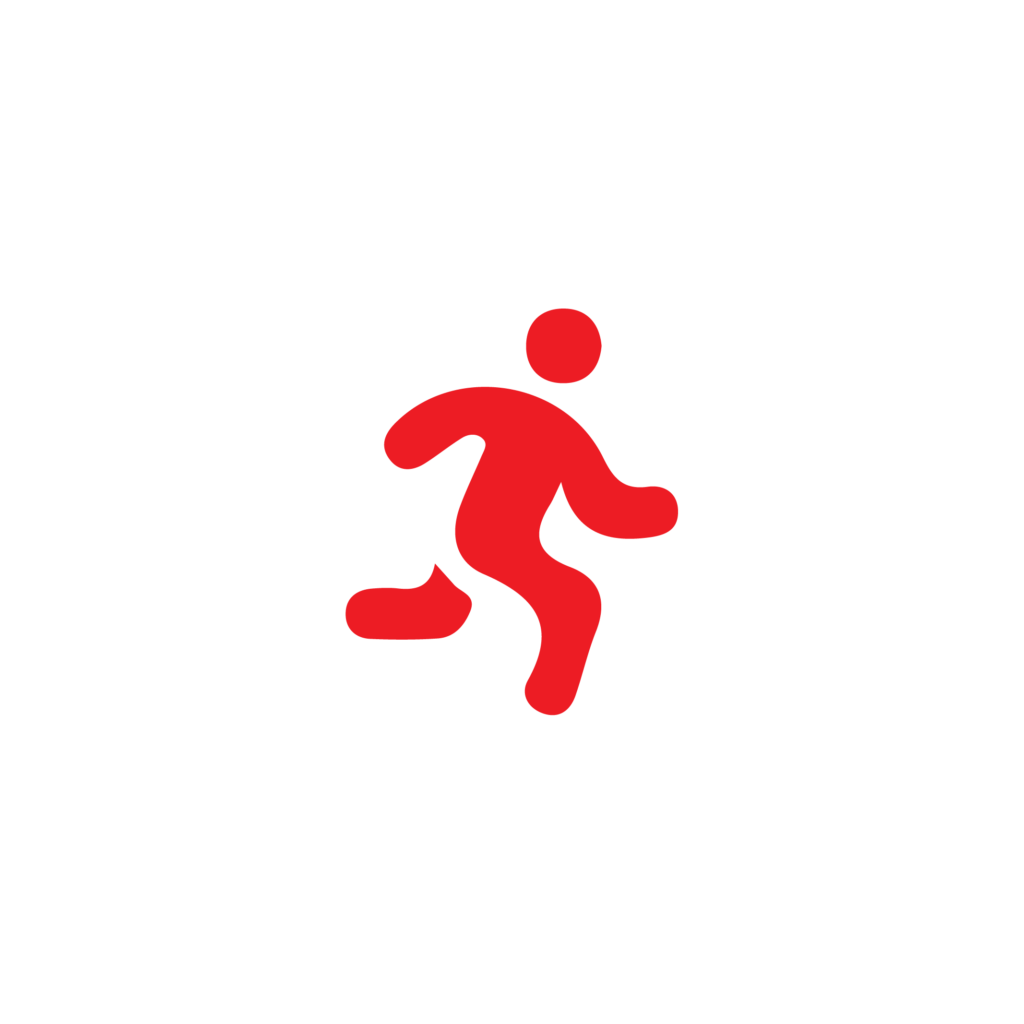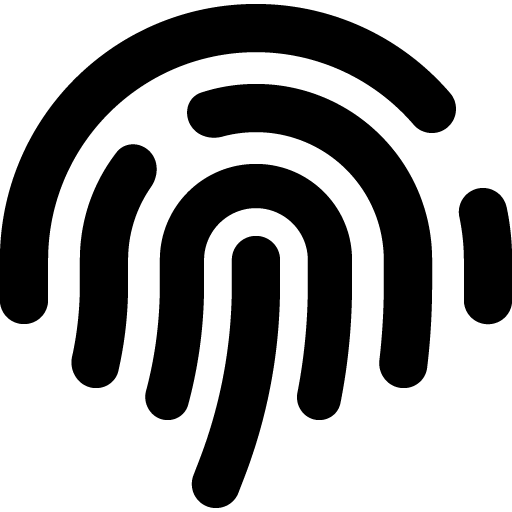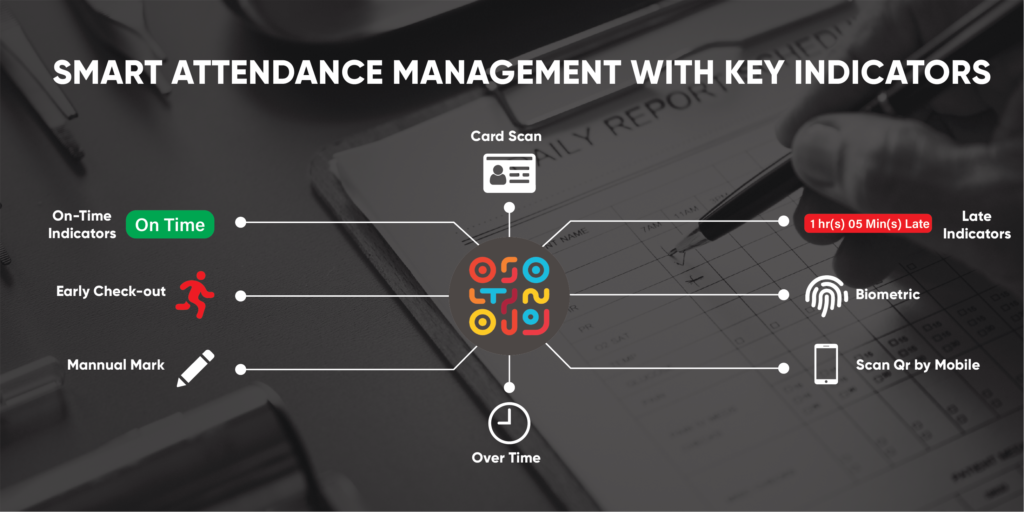Smart Attendance Management with Key Indicators
Smart attendance management is at the core of productivity and efficiency in contemporary organizations. Using innovative tools and key indicators, a firm can simplify their workforce operations by ensuring optimum use of time. Highlights the fundamentals of smart attendance management, where all the possible on-time tracking indicators, such as biometrics, QR code scans, and overtime tracking, have been discussed.
The Importance of Smart Attendance Management
In any organization, attendance management is more than just tracking when employees clock in and out. It ensures accountability, streamlines payroll processes, and enhances productivity. Smart attendance systems bring innovation into the mix, offering precision and real-time data to make informed decisions. These systems eliminate the challenges of manual tracking, reduce errors, and provide a comprehensive view of employee attendance patterns.
Key Indicators in Attendance Management
Smart attendance systems rely on various indicators to provide a holistic and accurate overview of employee attendance. Below, we explore these indicators and their significance:
1. On-Time Indicators

On-time attendance is a critical factor in maintaining operational efficiency. Employees who arrive on time demonstrate discipline and commitment, contributing positively to the organization’s workflow. Smart systems use card scans, biometric devices, or QR code scans to log punctuality accurately.
Benefits:
- It ensures that tasks are started on time, thus improving productivity.
- It will help the manager know which employees are punctual and award them for this.
- It will promote a culture of discipline and accountability.
2. Late Indicators

Late attendance disrupts the workflow and might delay projects. Smart systems can flag late entries, and provide detailed insights, such as how late an employee is and how often delays happen.
Key Features:
- Tracks and reports late attendance with time-specific data, such as “1 hr 5 mins late”.
- Sends automated reminders or notifications to employees and managers.
- Assists in addressing tardiness through data-driven discussions.
3. Early Check-Out

Early check-out is another key indicator monitored in smart attendance systems. It tracks instances where employees leave before the designated time, providing insights into patterns that may need addressing.
Why It Matters:
- Helps identify potential issues, such as disengagement or personal emergencies.
- Ensures fair calculations for payroll and overtime.
- Improves transparency in attendance records.
4. Overtime Monitoring

Overtime tracking is important for the health of employees and financial planning. Though overtime may be a sign of commitment, too many hours can be a sign of burnout. Smart systems track overtime effectively so that productivity and employee health are not compromised.
Benefits:
- Tracks overtime hours and pays employees accordingly.
- Avoids overwork, which makes the workplace healthier.
- Provides an overview of workload distribution, helping in better resource utilization.
5. Manual Attendance

Traditional but still in practice for many, manual attendance tracking is recording of attendance either in paper or through spreadsheets. While simple, this is error-prone and time-consuming compared to smart systems.
Disadvantages:
- Time consuming, prone to human errors.
- Can’t scale very well for big organizations.
- It does not allow real-time insight and automated reports.
Solution:
Moving from manual to an automated system can ensure accuracy as well as saves time.
Hybrid models can be utilized where manual tracking complements digital systems during technical downtimes.
Technologies Behind Smart Attendance Management
The success of smart attendance management is based on integrating advanced technologies. Here are some of the tools commonly used:
1. Card Scans

Card-based systems are one of the oldest yet reliable methods of attendance tracking. Employees use ID cards to clock in and out, with data automatically logged into the system.
Features:
- Easy to use and implement.
- Provisions real-time attendance data.
- Reduces the chances of errors caused by human factors.
2. Biometric Systems

Biometric devices employ unique physical attributes such as fingerprint recognition or face recognition for recording attendance accurately. Such systems prevent buddy punching and thus promote accountability.
Advantages:
- Very secure and tamper-proof.
- Delivers precise attendance records.
- Increases employee confidence in the system.
3. QR Code Scanning By mobile

QR codes is one of the new, modern mobile-friendly technologies used for marking attendance. Employees mark their attendance with their smartphones scanning a code.
Why It Works
- Convenient and cost-effective
- Reduces dependency on hardware such as biometric devices
- Suitable for working remotely or with a hybrid working arrangement
Challenges and Solutions
While smart attendance systems offer numerous benefits, they come with challenges:
- Implementation Costs: High initial costs for hardware and software can deter small businesses.
- Solution: Opt for scalable systems that grow with your business.
- Resistance to Change: Employees may hesitate to adopt new systems.
- Solution: Provide training sessions and emphasize the benefits.
- Data Privacy Concerns: Storing biometric data raises privacy issues.
- Solution: Ensure compliance with data protection laws and use secure systems.
Smart Attendance for Workplace Efficiency
This would make for smarter attendance management using indicators like timely attendance, biometrics, QR scanning, and overtime reporting. This ensures more accurate and efficient workforce operation with added responsibility and transparency. Business companies would then develop an efficient and employee-friendly working space if they introduce smart attendance management in their working premises. A smart attendance solution, therefore, means investment into a future long term success factor irrespective of small, medium-sized enterprises, or a huge company.
Smart attendance management uses technologies like biometrics and QR codes to automate and track employee attendance accurately, improving efficiency and reducing errors.
Key indicators include on-time attendance, late arrivals, early check-outs, overtime tracking, and manual attendance, which provide detailed insights into employee behavior.
Biometric systems track attendance using unique physical traits like fingerprints or facial recognition, ensuring accuracy and preventing buddy punching.
QR code scanning is cost-effective and mobile-friendly, allowing employees to mark attendance using their smartphones, ideal for remote or hybrid setups.
Challenges include high initial costs, employee resistance to change, and privacy concerns, which can be addressed through scalable systems, training, and data protection compliance.


